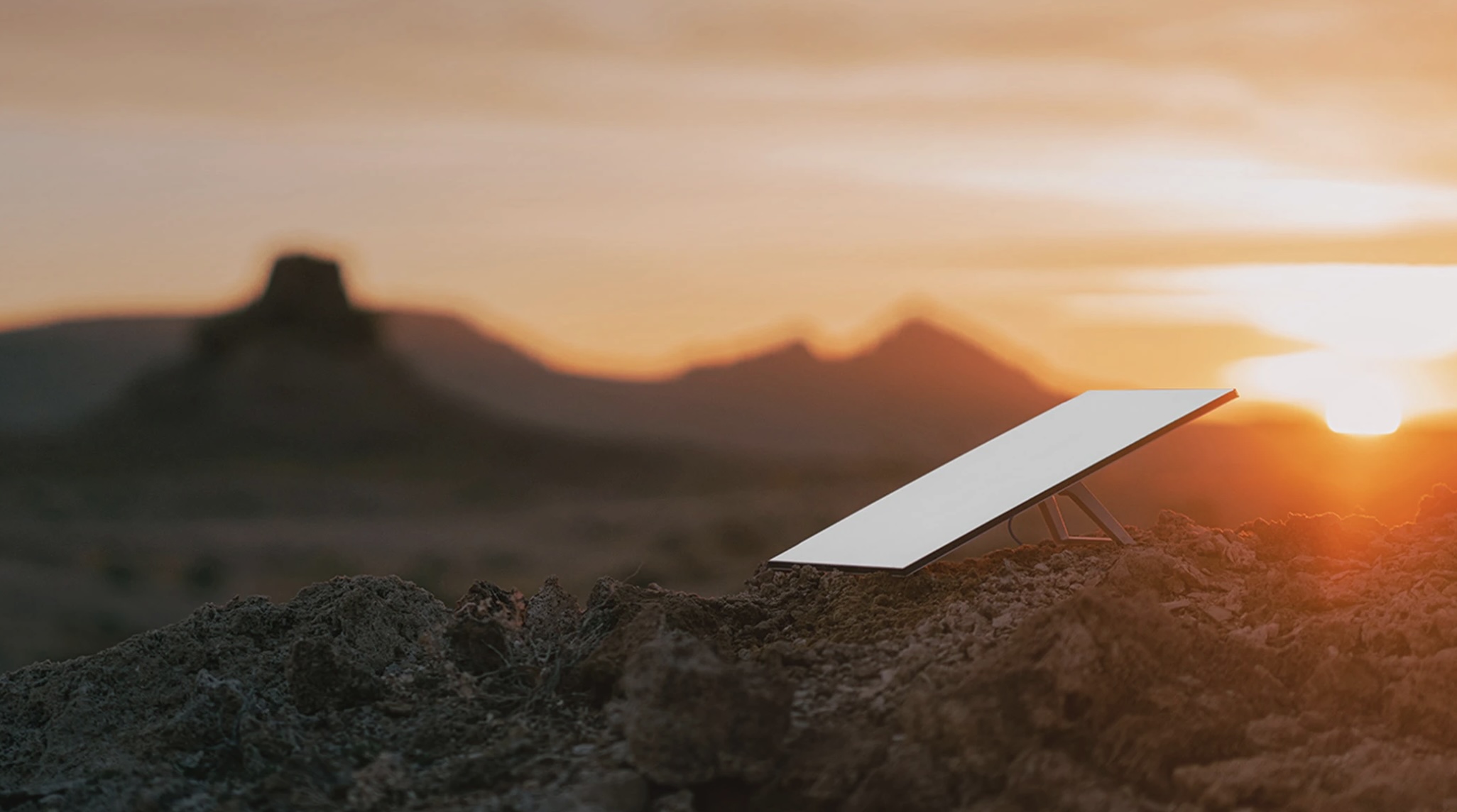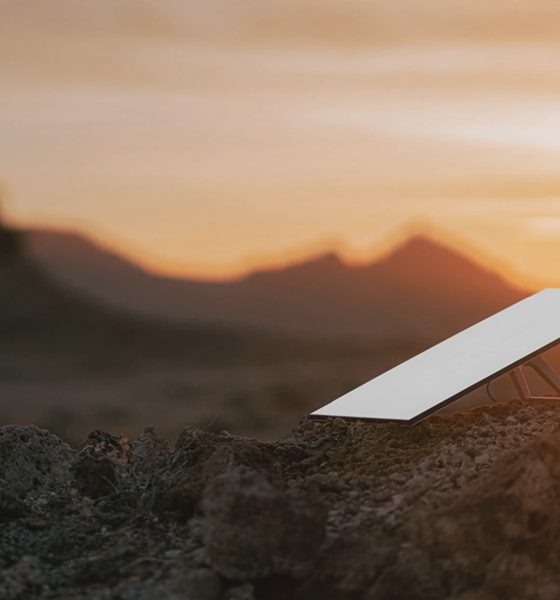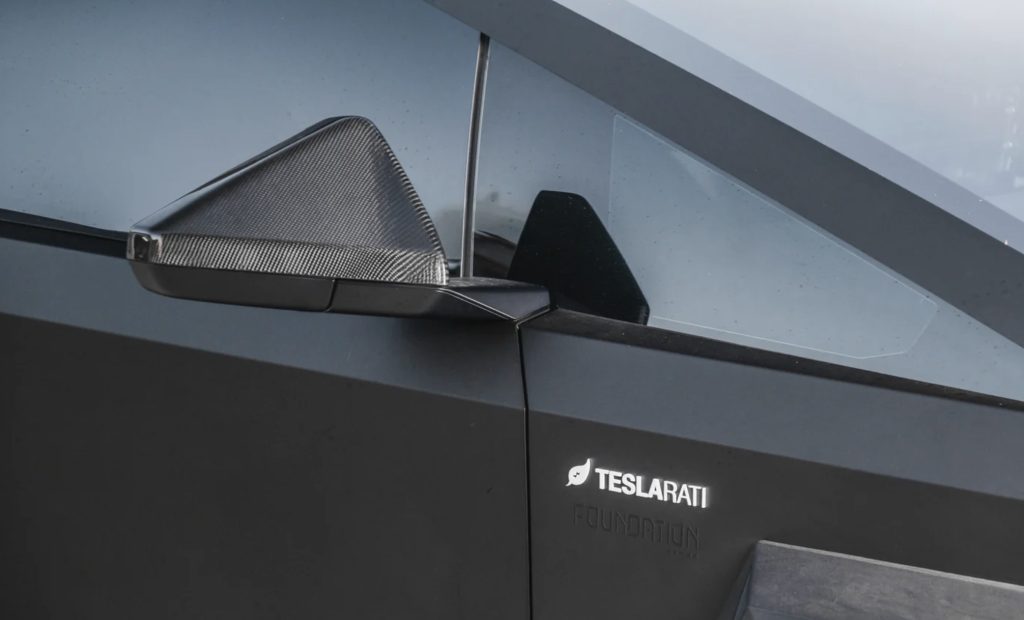

News
Starlink shines in FL after Hurricane Milton: ‘A game changer’ [Exclusive]
“So Starlink has been a game changer,” the CFO of Florida Jimmy Patronis, told Teslarati in a recent interview. Patronis was in a vehicle during our conversation visiting the areas in Florida impacted by Hurricane Milton. He had just left a part of Florida that was ravaged by at least 30 tornadoes during the hurricane.
“I think it had a lot of use. I bought the Starlink. I built a harness on the back of our car and we were traveling down the road with the Starlink. And I was doing TV interviews, going down the highway at 60 miles an hour and the communication was really impressive,” the CFO of Florida added.
Preparing for Hurricane Milton with Starlink
My interview with Patronis was ironic and interesting, to say the least. While he was in the car traveling to people affected by Milton, I was on the other side of the world, preparing for Typhoon Kristine, the third storm that would hit my home over the last 3-4 months.
I know how important communication lines are during a hurricane. In some cases, it is your only lifeline, and Patronis was well aware of that.
“My own personal experience, I went ahead and decided to buy a Starlink the week before Hurricane Milton made landfall,” Patronis told me.
“When a storm hits, being able to facilitate phone calls, content sharing, interviews, reports, it’s critical. People want to know what is happening. But unless you have dependable communication, it’s very difficult to do that. And we found Starlink to be invaluable when it came to providing those up-to-date communications for our first responders, for our state of operations…” he elaborated.
The internet was our only connection to the rest of the world when the first hurricane hit our house and flooded the streets of our neighborhood and our car. The second time, the water reached about 7 feet high and flooded our car and house. My family in New Jersey were on the phone talking to me as I hurried up the stairs with stuff, trying to beat the rising water rushing into our yard—and eventually into our house.
From my experience, floods are the worst part of hurricanes—and the scariest. I knew we were in trouble when we saw our neighbors asking for rescue through the HOA Facebook group. In the Philippines, people often call for help through social media posts during hurricanes, so the internet is critical.
First responders often use the internet or cellular lines to see if anyone needs help. It was no different during Hurricane Milton in Florida.
“So my office also coordinates all urban search and rescue where our first responders are on the field literally minutes after the storm has made landfall. They depend on Starlink. They will have Starlink out in the field with them. This is how they’re communicating, which homes they have visited, if there’s any need for any other assistance, equipment, help, you name it. If they just need more urban rescue first responders to show up,” Patronis told me.
Starlink delivering Peace of Mind after Hurricane Milton
The CFO of Florida and everyone in his office has been working non-stop, preparing for Hurricane Milton’s arrival and now helping people get their lives back together. He told me of one couple in their 70s who had recently married and moved into a new home just six days before Milton made landfall.
Unfortunately, a tornado dropped a dumpster on top of their house. Despite the situation they found themselves in, Patronis told me that the couple were not deterred by the damage caused by Hurricane Milton. They didn’t let Milton take away their happiness and were eager to rebuild.
Rebuilding is probably the hardest thing to do after a hurricane but is unavoidable and necessary. After the second hurricane flooded our home and car, my husband and I immediately acted. We got our car to a mechanic and the cleaners—again. We fortified our gates so less water would enter our lot. The one thing we should have done but didn’t do was prepare to be cut off from the world.
As I said earlier, during the interview with Patronis, Typhoon Kristine was entering the Philippines. The internet connection was already spotty as I talked to him. At one point, our call was abruptly dropped because I lost internet connection. I should have known then that we were in for a rough ride.
A day after my interview with Patronis, Typhoon Kristine’s relentless rain over the Philippines caused the river near our neighborhood to overflow for the third time. The water rose fast; within 20 minutes, it was waist-high from street level. Luckily, our reinforced gates held fast. However, our internet and cellular connection were so bad we couldn’t contact our families or get any updates about the typhoon.
The most terrifying thing about a hurricane is being unable to communicate during or after it. It fills you with dread, and fear, and unfathomable thoughts. Information is a crucial part of natural disasters to stop the fear, focus on something else, and get through it. Otherwise, it feels endless.
Starlink provided people in Florida with information during and after Hurricane Milton and Hurricane Helene. Something I wish I had during Hurricane Kristine.
“So you know we’re very committed to using cellular, but in some cases, the Starlink has been a provider of information that…it’s been priceless.
“We were also able to—with the help of T-Mobile—get the FCC to open up a full-blown texting in Florida via satellite and Starlink,” Patronis told me.
Are you rebuilding after Hurricane Milton?
I understand that rebuilding after a hurricane can be difficult. Patronis told me about predators that have been coercing people to sign over their insurance benefits while they try to rebuild their lives and move forward.
The CFO of Florida’s office handles insurance fraud cases and also helps people with their insurance claims. You may seek help by calling 1877-My-FL-CFO or visiting PrepareFL.com.
The best thing you can do after going through a calamity is to ask for help.
What’s your experience with Starlink Cellular? Please share them with me through maria@teslarati.com
If you have any tips, contact me at maria@teslarati.com or via X @Writer_0100110.


News
Tesla aims to combat common Full Self-Driving problem with new patent
Tesla writes in the patent that its autonomous and semi-autonomous vehicles are heavily reliant on camera systems to navigate and interact with their environment.

Tesla is aiming to combat a common Full Self-Driving problem with a new patent.
One issue with Tesla’s vision-based approach is that sunlight glare can become a troublesome element of everyday travel. Full Self-Driving is certainly an amazing technology, but there are still things Tesla is aiming to figure out with its development.
Unfortunately, it is extremely difficult to get around this issue, and even humans need ways to combat it when they’re driving, as we commonly use sunglasses or sun visors to give us better visibility.
Cameras obviously do not have these ways to fight sunglare, but a new patent Tesla recently had published aims to fight this through a “glare shield.”
Tesla writes in the patent that its autonomous and semi-autonomous vehicles are heavily reliant on camera systems to navigate and interact with their environment.

The ability to see surroundings is crucial for accurate performance, and glare is one element of interference that has yet to be confronted.
Tesla described the patent, which will utilize “a textured surface composed of an array of micro-cones, or cone-shaped formations, which serve to scatter incident light in various directions, thereby reducing glare and improving camera vision.”

The patent was first spotted by Not a Tesla App.
The design of the micro-cones is the first element of the puzzle to fight the excess glare. The patent says they are “optimized in size, angle, and orientation to minimize Total Hemispherical Reflectance (THR) and reflection penalty, enhancing the camera’s ability to accurately interpret visual data.”
Additionally, there is an electromechanical system for dynamic orientation adjustment, which will allow the micro-cones to move based on the angle of external light sources.
This is not the only thing Tesla is mulling to resolve issues with sunlight glare, as it has also worked on two other ways to combat the problem. One thing the company has discussed is a direct photon count.
CEO Elon Musk said during the Q2 Earnings Call:
“We use an approach which is direct photon count. When you see a processed image, so the image that goes from the sort of photon counter — the silicon photon counter — that then goes through a digital signal processor or image signal processor, that’s normally what happens. And then the image that you see looks all washed out, because if you point the camera at the sun, the post-processing of the photon counting washes things out.”
Future Hardware iterations, like Hardware 5 and Hardware 6, could also integrate better solutions for the sunglare issue, such as neutral density filters or heated lenses, aiming to solve glare more effectively.
Elon Musk
Delaware Supreme Court reinstates Elon Musk’s 2018 Tesla CEO pay package
The unanimous decision criticized the prior total rescission as “improper and inequitable,” arguing that it left Musk uncompensated for six years of transformative leadership at Tesla.

The Delaware Supreme Court has overturned a lower court ruling, reinstating Elon Musk’s 2018 compensation package originally valued at $56 billion but now worth approximately $139 billion due to Tesla’s soaring stock price.
The unanimous decision criticized the prior total rescission as “improper and inequitable,” arguing that it left Musk uncompensated for six years of transformative leadership at Tesla. Musk quickly celebrated the outcome on X, stating that he felt “vindicated.” He also shared his gratitude to TSLA shareholders.
Delaware Supreme Court makes a decision
In a 49-page ruling Friday, the Delaware Supreme Court reversed Chancellor Kathaleen McCormick’s 2024 decision that voided the 2018 package over alleged board conflicts and inadequate shareholder disclosures. The high court acknowledged varying views on liability but agreed rescission was excessive, stating it “leaves Musk uncompensated for his time and efforts over a period of six years.”
The 2018 plan granted Musk options on about 304 million shares upon hitting aggressive milestones, all of which were achieved ahead of time. Shareholders overwhelmingly approved it initially in 2018 and ratified it once again in 2024 after the Delaware lower court struck it down. The case against Musk’s 2018 pay package was filed by plaintiff Richard Tornetta, who held just nine shares when the compensation plan was approved.
A hard-fought victory
As noted in a Reuters report, Tesla’s win avoids a potential $26 billion earnings hit from replacing the award at current prices. Tesla, now Texas-incorporated, had hedged with interim plans, including a November 2025 shareholder-approved package potentially worth $878 billion tied to Robotaxi and Optimus goals and other extremely aggressive operational milestones.
The saga surrounding Elon Musk’s 2018 pay package ultimately damaged Delaware’s corporate appeal, prompting a number of high-profile firms, such as Dropbox, Roblox, Trade Desk, and Coinbase, to follow Tesla’s exodus out of the state. What added more fuel to the issue was the fact that Tornetta’s legal team, following the lower court’s 2024 decision, demanded a fee request of more than $5.1 billion worth of TSLA stock, which was equal to an hourly rate of over $200,000.
Delaware Supreme Court Elon Musk 2018 Pay Package by Simon Alvarez
News
Tesla Cybercab tests are going on overdrive with production-ready units
Tesla is ramping its real-world tests of the Cybercab, with multiple sightings of the vehicle being reported across social media this week.

Tesla is ramping its real-world tests of the Cybercab, with multiple sightings of the autonomous two-seater being reported across social media this week. Based on videos of the vehicle that have been shared online, it appears that Cybercab tests are underway across multiple states.
Recent Cybercab sightings
Reports of Cybercab tests have ramped this week, with a vehicle that looked like a production-ready prototype being spotted at Apple’s Visitor Center in California. The vehicle in this sighting was interesting as it was equipped with a steering wheel. The vehicle also featured some changes to the design of its brake lights.
The Cybercab was also filmed testing at the Fremont factory’s test track, which also seemed to involve a vehicle that looked production-ready. This also seemed to be the case for a Cybercab that was spotted in Austin, Texas, which happened to be undergoing real-world tests. Overall, these sightings suggest that Cybercab testing is fully underway, and the vehicle is really moving towards production.
Production design all but finalized?
Recently, a near-production-ready Cybercab was showcased at Tesla’s Santana Row showroom in San Jose. The vehicle was equipped with frameless windows, dual windshield wipers, powered butterfly door struts, an extended front splitter, an updated lightbar, new wheel covers, and a license plate bracket. Interior updates include redesigned dash/door panels, refined seats with center cupholders, updated carpet, and what appeared to be improved legroom.
There seems to be a pretty good chance that the Cybercab’s design has been all but finalized, at least considering Elon Musk’s comments at the 2025 Annual Shareholder Meeting. During the event, Musk confirmed that the vehicle will enter production around April 2026, and its production targets will be quite ambitious.








